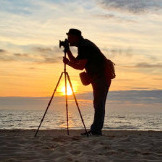Adobe RGB or SRGB?
-
Recently Browsing 0 members
- No registered users viewing this page.
-
Similar Content
-
Adobe PS …
By Louis,
- 11 replies
- 431 views
-
- 7 replies
- 899 views
-
- 11 replies
- 1,294 views
-
- 3 replies
- 701 views
-
- 38 replies
- 1,757 views
-





Recommended Posts
Join the conversation
You can post now and register later. If you have an account, sign in now to post with your account.
Note: Your post will require moderator approval before it will be visible.